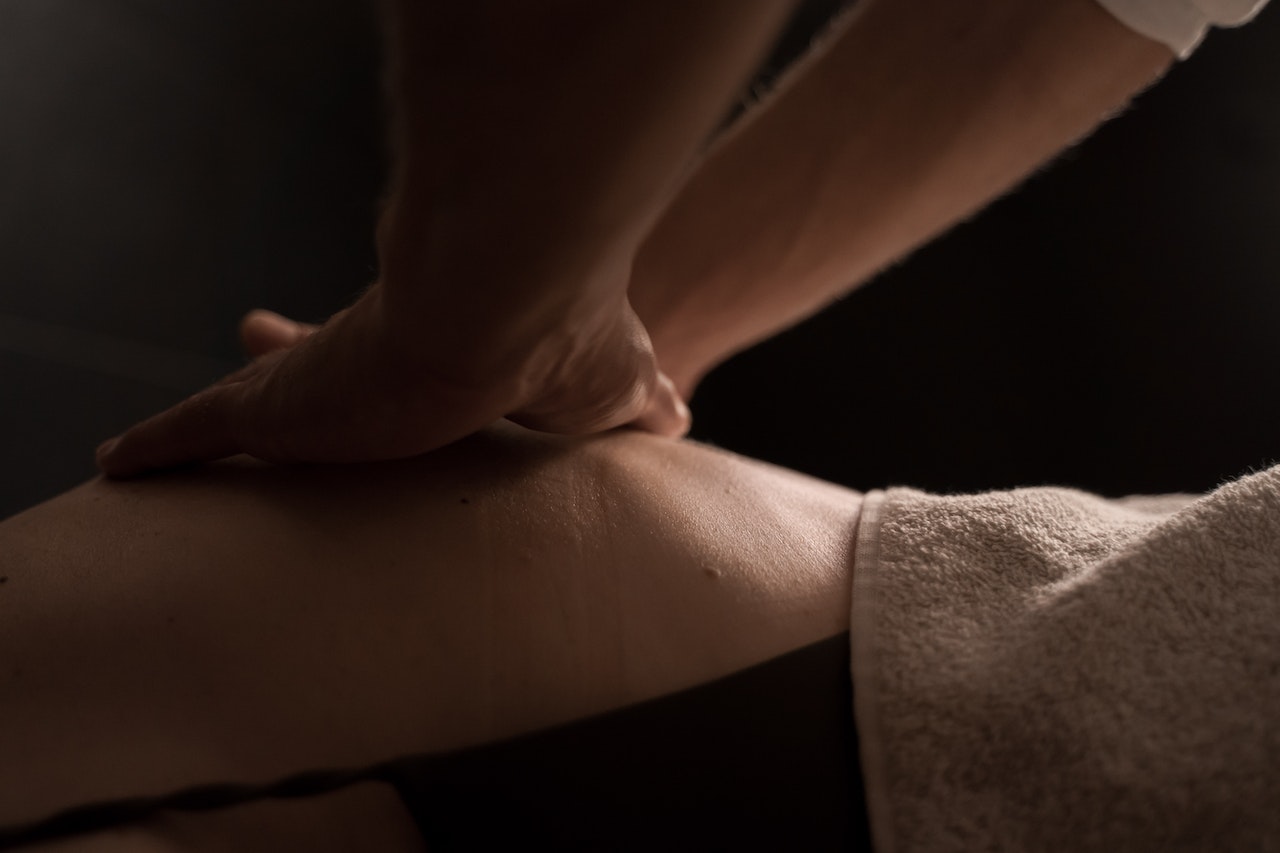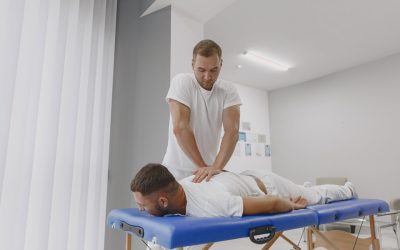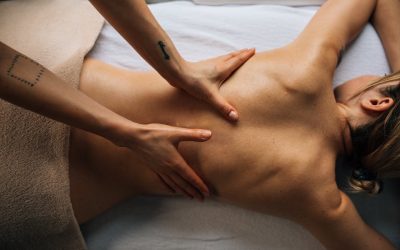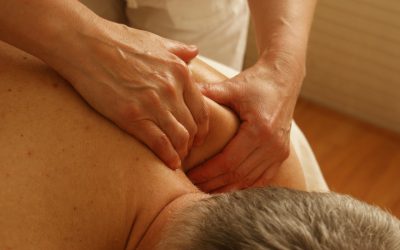As a competitive swimmer, every stroke and every second counts. You dedicate countless hours to training, pushing your limits in the pursuit of excellence. But have you considered incorporating bodywork massage into your regimen? In this must-read blog post, we will delve into the benefits of bodywork massage for competitive swimmers and how it can enhance your performance in the pool.
Bodywork massage goes beyond mere relaxation; it plays a crucial role in promoting overall well-being and optimizing athletic performance. From reducing muscle tension and improving flexibility to enhancing circulation and accelerating recovery, sports massage offers a myriad of advantages that serious athletes should not overlook. So, if you’re ready to take your swimming game to new heights, join us as we explore the transformative power of bodywork massage for competitive swimmers.
Benefits of Massage for Competitive Swimmers
Massage therapy is not just a luxury reserved for relaxation; it can be an essential tool in the arsenal of competitive swimmers. Incorporating regular bodywork massage into their training regimen can provide numerous benefits that can significantly impact their performance in the pool. Let’s explore some of the advantages that massage offers to serious athletes like competitive swimmers.
Boost Circulation and Oxygen Delivery to Muscles
One of the primary benefits of sports massage for competitive swimmers is its ability to boost circulation and oxygen delivery to muscles. The vigorous movements and repetitive motions involved in swimming can sometimes lead to restricted blood flow, which may result in muscle fatigue and decreased performance. However, regular massage sessions help increase blood flow, allowing more oxygen and nutrients to reach the muscles efficiently.
Reduce Muscle Tension and Improve Flexibility
Competitive swimmers rely on their muscles’ flexibility and range of motion to execute precise swimming techniques effectively. Muscle tension and tightness can hinder their performance by limiting their mobility in the water. Fortunately, bodywork massage helps alleviate muscle tension by targeting specific areas prone to tightness, such as the shoulders, neck, and back. By loosening these tense muscles, swimmers can improve their flexibility, enabling them to move more freely through the water with enhanced technique.
Alleviate Stress and Promote Relaxation
Competitive swimming is not only physically demanding but also mentally challenging. Athletes often experience high levels of stress before competitions or during intense training periods. Massage therapy provides a much-needed opportunity for relaxation and stress relief. The soothing touch during a massage session triggers the release of endorphins – natural mood enhancers – helping swimmers feel calmer, more focused, and better equipped to handle the pressures associated with competitive swimming.
Enhance Recovery
Intense training sessions put significant strain on a swimmer’s body, often leading to post-workout soreness and fatigue. Massage therapy plays a crucial role in enhancing recovery by reducing muscle soreness and promoting faster healing. The kneading, stretching, and deep tissue techniques used in bodywork massage help alleviate muscle inflammation and promote the elimination of metabolic waste products, allowing swimmers to bounce back quicker from intense training sessions or competitions.
Pre-event Sports Massage for Swimmers
Before diving into the pool for a swim meet or race, serious athletes know that preparation is key. And one crucial aspect of preparation is getting a targeted pre-event sports massage. This type of bodywork massage is specifically designed to help competitive swimmers achieve optimal performance in the water. Let’s explore why it’s a must-read for all serious athletes.
Prepare Your Body for Optimal Performance
A pre-event sports massage helps prepare your body physically and mentally for the challenges ahead. By increasing blood flow to your muscles, this massage technique warms them up and gets them ready to perform at their best. The increased circulation delivers vital nutrients and oxygen to your muscles, which can enhance their overall function and endurance during a swim meet or race.
Enhance Coordination and Reaction Time
Swimming requires precise coordination and lightning-fast reaction times. A pre-event sports massage can activate your nervous system, improving these essential aspects of swimming performance. By stimulating nerve endings in your muscles, this type of massage enhances communication between your brain and body, leading to improved coordination in the water. It can also help sharpen your focus and reaction time, allowing you to react quickly to changes in the race or make split-second decisions during critical moments.
Prevent Injuries During Intense Sessions
Intense training sessions are an integral part of any competitive swimmer’s routine. However, they also come with an increased risk of injuries due to repetitive motions and strain on muscles and joints. A pre-event sports massage can play a crucial role in injury prevention by loosening tight muscles and joints before intense swimming sessions.
Recovering From a Swim Event: Post-swim Sports Massage
After giving your all in a swim event, it’s crucial to prioritize your recovery. One effective way to accelerate the recovery process is by scheduling a specialized post-swim sports massage session. This type of bodywork massage is designed specifically for competitive swimmers like you, aiming to enhance your recovery and improve performance for future events.
Flush Out Metabolic Waste Products
During intense swim competitions or training sessions, your muscles work hard and produce metabolic waste products such as lactic acid. These waste products can accumulate in your muscles, leading to fatigue and soreness. A post-swim sports massage helps flush out these waste products, promoting faster recovery and reducing muscle soreness.
Promote Lymphatic Drainage
Swimming puts significant stress on your body, especially during high-intensity events. This can result in swelling and inflammation due to the accumulation of fluid in the tissues. A post-swim sports massage can promote lymphatic drainage, helping reduce swelling and inflammation after intense competition or training sessions.
Restore Muscle Balance and Aid Injury Prevention
Competitive swimmers often experience muscle imbalances due to repetitive movements involved in swimming strokes. These imbalances can lead to increased risk of injuries if left unaddressed. A targeted post-event bodywork session focuses on restoring muscle balance by addressing tight areas and releasing tension in overworked muscles. By doing so, it aids in injury prevention and helps you maintain optimal performance levels.
Enhance Circulation and Oxygen Delivery
An essential aspect of post-swim sports massage is its ability to enhance circulation throughout your body. Improved blood flow means better oxygen delivery to your muscles, which facilitates their repair and regeneration processes. This increased oxygen supply also promotes the removal of metabolic waste products from the muscles, further aiding in recovery.
Psychological Benefits
Recovering from a swim event isn’t just about physical restoration; it’s also about mental rejuvenation. Post-swim sports massage provides a much-needed opportunity for relaxation and stress relief. The soothing touch of the massage therapist can help you unwind, release tension, and promote a sense of well-being after the intensity of competition.
Professional Guidance
It’s crucial to seek professional guidance from a qualified massage therapist with experience working with athletes. A skilled therapist will have an in-depth understanding of the specific needs of competitive swimmers and can tailor the session to address your individual requirements.
What Is Sports Massage for Swimmers?
Sports Massage is a therapeutic treatment designed specifically for competitive swimmers’ needs. It involves applying various massage techniques to address specific issues related to swimming. Sports massage helps swimmers improve performance, prevent injuries, and enhance recovery. It focuses on the muscles, joints, and connective tissues used extensively in swimming.
Targeting Swimmer’s Needs
Sports massage caters to the unique requirements of competitive swimmers. Unlike general massages, which are more relaxation-focused, sports massage aims to optimize athletic performance. It targets the areas of the body that are heavily utilized during swimming, such as the shoulders, arms, back, and legs. By focusing on these specific muscle groups and joints, sports massage helps swimmers maintain optimal flexibility and range of motion.
Improving Performance
One of the primary goals of sports massage for swimmers is to enhance performance in the water. By addressing tightness or imbalances in muscles and fascia (connective tissue), it can improve stroke efficiency and power output. The increased blood flow from the massage also aids in delivering oxygen and nutrients to the muscles, reducing fatigue during training or competitions.
Preventing Injuries
Competitive swimmers often face a risk of overuse injuries due to repetitive movements involved in their sport. Sports massage plays a crucial role in injury prevention by identifying areas of tension or weakness early on. By addressing these issues through targeted techniques like deep tissue massage or trigger point therapy, sports massage can help alleviate muscle imbalances and reduce the risk of common swimming-related injuries like shoulder impingement or lower back strain.
Enhancing Recovery
Intense training sessions or competitions can leave swimmers with sore muscles and increased fatigue. Sports massage aids in post-workout recovery by promoting circulation and lymphatic drainage. This helps remove metabolic waste products like lactic acid from the muscles more efficiently while delivering fresh oxygenated blood for faster healing. The relaxation induced by the massage also helps reduce stress and tension, allowing swimmers to recover both physically and mentally.
Different Techniques for Specific Needs
Sports massage for swimmers utilizes various techniques depending on the individual’s needs and goals. Some commonly used techniques include:
- Swedish Massage: This gentle technique promotes relaxation and improves overall blood circulation.
- Deep Tissue Massage: It targets deeper layers of muscle tissue to release chronic tension and alleviate pain.
- Myofascial Release: This technique focuses on releasing tightness in the fascia, improving flexibility and range of motion.
- Trigger Point Therapy: By applying pressure to specific points of muscle tension, trigger point therapy helps relieve pain and restore normal muscle function.
Finding Relief From Massage as a Swimmer
As a serious athlete, finding effective ways to enhance your performance and alleviate the physical demands of training is essential. One powerful tool that can greatly benefit competitive swimmers is bodywork massage. Regular sports massage sessions can provide much-needed relief from muscle tension and tightness, addressing common swimmer’s ailments such as shoulder pain or lower back discomfort.
Experience Relief from Muscle Tension and Tightness
Intense training sessions in the pool can take a toll on your muscles, leaving them feeling tight and fatigued. Sports massage offers targeted techniques that help release tension and improve flexibility, allowing your muscles to recover more effectively. By targeting specific areas of concern, such as the shoulders or lower back, massage therapists can apply pressure and kneading motions to relieve tightness and restore optimal range of motion.
Address Common Swimmer’s Ailments
Competitive swimmers often experience specific issues related to their sport. Shoulder pain is one such common ailment due to the repetitive nature of swimming strokes. Bodywork massage can help alleviate this discomfort by targeting the muscles surrounding the shoulder joint, releasing tension and promoting healing.
Lower back discomfort is another challenge that many swimmers face. The constant engagement of core muscles combined with the strain placed on the lower back during training can lead to pain and stiffness. Massage therapy can assist in relieving these symptoms by focusing on loosening tight muscles in the lower back region.
Improve Overall Well-Being
While physical benefits are undoubtedly important for athletes, it’s crucial not to overlook mental well-being as well. Training at a high level requires immense dedication and focus, which often leads to heightened stress levels. Regular sports massage sessions provide an opportunity for relaxation and stress reduction.
Massage therapy promotes deep relaxation by activating the body’s parasympathetic nervous system—the rest-and-digest response—which helps counterbalance the intense fight-or-flight mode often experienced by competitive athletes. By reducing stress levels, massage can improve overall well-being and contribute to a more positive mindset, ultimately enhancing performance in the pool.
Enhance Body Awareness and Mindfulness
In addition to physical relief and relaxation, bodywork massage also offers swimmers the opportunity to enhance their body awareness and mindfulness in the water. During a massage session, you are encouraged to tune into your body’s sensations, noticing areas of tension or discomfort. This heightened awareness can translate into improved technique and form while swimming.
Therapeutic touch during massage therapy sessions helps foster a stronger mind-body connection, allowing you to better understand how your movements in the water affect your muscles and joints. By becoming more mindful of your body’s alignment and movement patterns, you can make adjustments that optimize efficiency and reduce the risk of injury.
Common Swim Injuries and How Sports Massage Can Help
Shoulder Impingement Syndrome: Alleviating Pain with Targeted Massage Techniques
Shoulder impingement syndrome is a common injury that many competitive swimmers face. The repetitive overhead motion of swimming can lead to inflammation and irritation in the tendons of the rotator cuff, causing pain and limited range of motion. However, there is good news for swimmers dealing with this issue – sports massage can be a game-changer.
By using targeted massage techniques, such as deep tissue massage and myofascial release, therapists can help alleviate the symptoms of shoulder impingement syndrome. These techniques focus on releasing tension in the muscles surrounding the shoulder joint, improving blood flow, and promoting healing. Not only does sports massage provide relief from pain, but it also helps restore proper function to the shoulder joint, allowing swimmers to get back in the water faster and perform at their best.
Addressing Lower Back Strain: Relieving Muscular Imbalances with Sports Massage
Lower back strain is another common complaint among competitive swimmers. The repetitive nature of swimming combined with poor posture and muscular imbalances can put excessive stress on the lower back muscles. This can lead to pain, stiffness, and decreased performance in the water.
Sports massage offers an effective solution for relieving lower back strain. Through various techniques like Swedish massage and trigger point therapy, therapists can target specific muscle groups that contribute to muscular imbalances in the lower back region. By releasing tension and restoring balance to these muscles, sports massage helps alleviate pain and improve overall flexibility and range of motion.
Overuse Injuries: Treating Swimmer’s Knee and Rotator Cuff Tendinitis with Specialized Bodywork Treatments
Overuse injuries are a common occurrence for competitive swimmers due to their rigorous training schedules. Conditions like swimmer’s knee (patellofemoral pain syndrome) and rotator cuff tendinitis can be incredibly frustrating, causing pain and limiting performance.
Fortunately, specialized bodywork treatments can provide relief for these overuse injuries. Techniques like sports massage, myofascial release, and stretching can help reduce inflammation, break down scar tissue, and improve flexibility in the affected areas. By addressing the root causes of these injuries, swimmers can experience significant pain reduction and improved function.
Muscle Strains or Sprains: Effective Treatment with Sports Massage
Muscle strains or sprains are common occurrences in swimming due to sudden movements in the water. These injuries can range from mild to severe and often require immediate attention to prevent further damage.
Sports massage is a valuable tool for treating muscle strains or sprains in swimmers. Through techniques like effleurage (long strokes), petrissage (kneading), and friction, therapists can promote blood circulation to the injured area, reduce swelling, and facilitate healing.
Treating Shoulder Stiffness and Pain With Massage Techniques
Release tension in the shoulders using deep tissue massage to alleviate stiffness and pain.
Competitive swimmers often experience shoulder stiffness and pain due to the repetitive motions involved in their sport. Fortunately, bodywork massage techniques can be highly effective in addressing these issues. Deep tissue massage is a popular method used by therapists to release tension and provide relief from shoulder discomfort.
During a deep tissue massage session, the therapist applies firm pressure to the muscles surrounding the shoulders. This targeted pressure helps to break up knots and adhesions that may have formed due to overuse or strain. By working deeply into the muscle fibers, deep tissue massage promotes increased blood flow, which aids in reducing inflammation and promoting healing.
Pros:
- Deep tissue massage targets specific areas of tension in the shoulders.
- Increased blood flow helps reduce inflammation and promote healing.
- Alleviates stiffness and pain associated with repetitive shoulder movements.
Cons:
- Deep tissue massage can cause temporary soreness or discomfort immediately after the session.
- Some individuals may find deep pressure uncomfortable or painful.
Target trigger points associated with shoulder discomfort to promote relaxation and mobility.
Trigger points are localized areas of tightness within muscle fibers that can refer pain to other parts of the body. In the case of shoulder discomfort, trigger points may develop in muscles such as the deltoids, rotator cuff muscles, or upper back muscles. Massage therapy can effectively target these trigger points to alleviate pain and restore mobility.
By applying direct pressure on trigger points during a massage session, therapists can help release tension held within these areas. This not only provides immediate relief but also encourages improved range of motion in the shoulders. Trigger point therapy is often combined with other techniques such as stretching or myofascial release for optimal results.
Pros:
- Targeting trigger points directly addresses sources of shoulder discomfort.
- Relieves pain and improves range of motion.
- Can be combined with other techniques for enhanced effectiveness.
Cons:
- Trigger point therapy may cause temporary discomfort during the session.
- Multiple sessions may be required to fully address trigger points and achieve long-lasting relief.
Conclusion
Congratulations, serious athletes! You’ve made it to the end of this must-read blog post on bodywork massage for competitive swimmers. By now, you should have a deep understanding of the benefits that sports massage can provide to enhance your performance in the water.
As you dive into your training regimen, don’t forget to incorporate regular sports massages into your routine. These massages will not only help prevent injuries but also aid in faster recovery after intense swim events. Just like a well-oiled machine, your body needs maintenance and care to perform at its best.
So, take the plunge and make sports massage an integral part of your swimming journey. Seek out a qualified therapist who specializes in working with athletes like yourself. Remember, investing in your body’s wellbeing is an investment in your success as a competitive swimmer.
Transform Your Swim Performance: Experience the Healing Touch of Bodywork Massage
Are you a swimmer or athlete constantly battling pain and unsure where to find relief? Look no further, as Beyond Ergonomics offers the perfect solution tailored just for you. Understanding that body imbalances, repetitive motions, and inadequate movement often lead to injuries and chronic pain, we specialize in identifying these issues and fostering positive change. Our unique approach is specifically designed to address the challenges faced by athletes and desk professionals alike.
At MedicinEvolution, we go beyond the conventional to offer Bodywork Massage for Swimmers – a specialized service aimed at reducing your pain and improving your overall well-being. This isn’t just a massage; it’s a journey towards discovering and rectifying the imbalances that hinder your performance and comfort. Whether you’ve struggled with persistent pain or are looking to enhance your swimming performance, MedicinEvolution Bodywork Beyond Massage is your gateway to a healthier, more balanced body.
Don’t let pain hold you back any longer. Embark on a transformative journey with us and feel the difference as we help you swim towards a pain-free life. Schedule your appointment with MedicinEvolution today and dive into the world of enhanced performance and comfort. Your body deserves the best, and we are here to provide it.






0 Comments